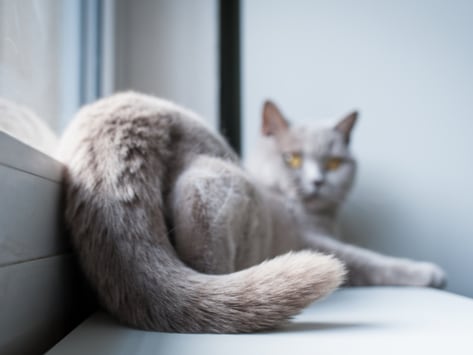The tail
Along with the ears, take a look at your cat’s tail position.
The tail tells a lot about your cat’s mood. You’ll see pretty quickly when NOT to touch your cat, as well as when he is apt to be most receptive to attention.
If his tail is straight up like an exclamation point, it generally means he is happy and content, without a care in the world. And if that tail turns into a question mark, your cat is especially happy to see you and might be very receptive to petting and playtime. If you have two cats who are extremely bonded, you may see one put his tail around the other in a protective, loving embrace. In fact, my cats will put their tails around my legs sometimes as they walk along beside me — especially at mealtime as they escort me into the kitchen!

I’m seeing happy tails here now, but the first few days at the new house (and while packing at the old place) was a different story. Tails were low in position, meaning they were not quite sure what was up, perhaps expecting trouble. Some of my shyer cats actually curled their tails between their legs, as if to protect their most sensitive areas. This is a sure sign of extreme fright and anxiety. Once they began to settle in, I started to see some cat tails whipping around in anticipation, as they slowly explored the new terrain, still feeling a bit fearful.
And let’s not forget the “bottlebrush tail.” This is when all the hairs on a cat’s tail puff out, and a fight is likely to be brewing. I did see this tail type a bit as my cats began to claim various spots around the new house; we had some tiny disagreements, but nothing serious.








0 comments:
Post a Comment